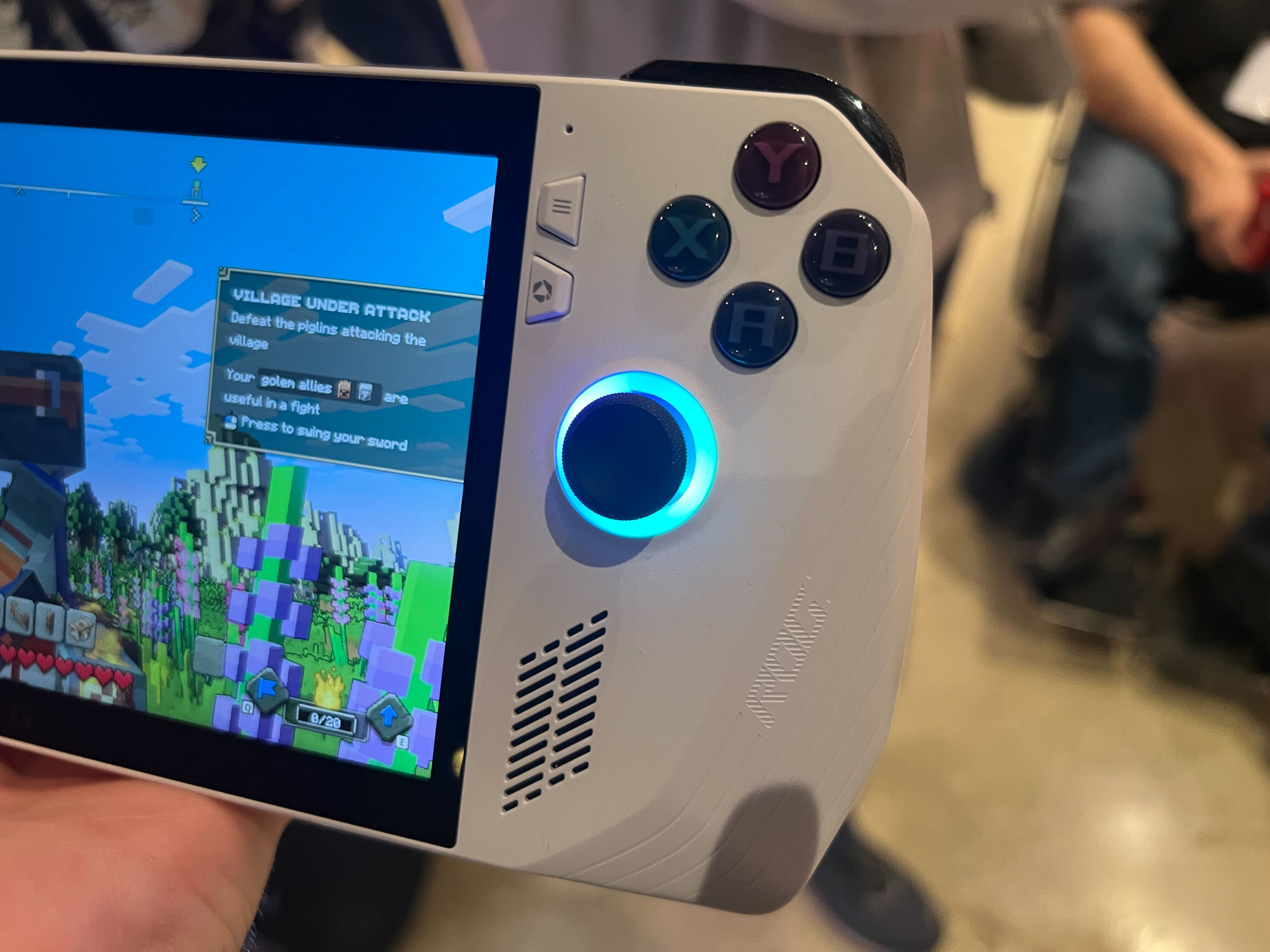
As we approach the May 11 launch of the Asus ROG Ally, the laptop manufacturer’s foray into PC handheld gaming, the media coverage and buzz around it is starting to intensify. And for good reason. Since the Steam Deck’s own launch last year, we’ve seen a market for portable gaming systems that can handle the best PC games grow out of thin air. And the ROG Ally is poised to take things even further, with a design and performance that could expand the market even further.
However, it’s not a perfect machine. There are setbacks that could either end up being minor stepping stones or could end up completely botching the ROG Ally’s launch and momentum. And considering that Asus put considerable effort and funding into this handheld, over five years according to a spokesperson, all that coming to nothing would be a shame considering this machine’s potential.
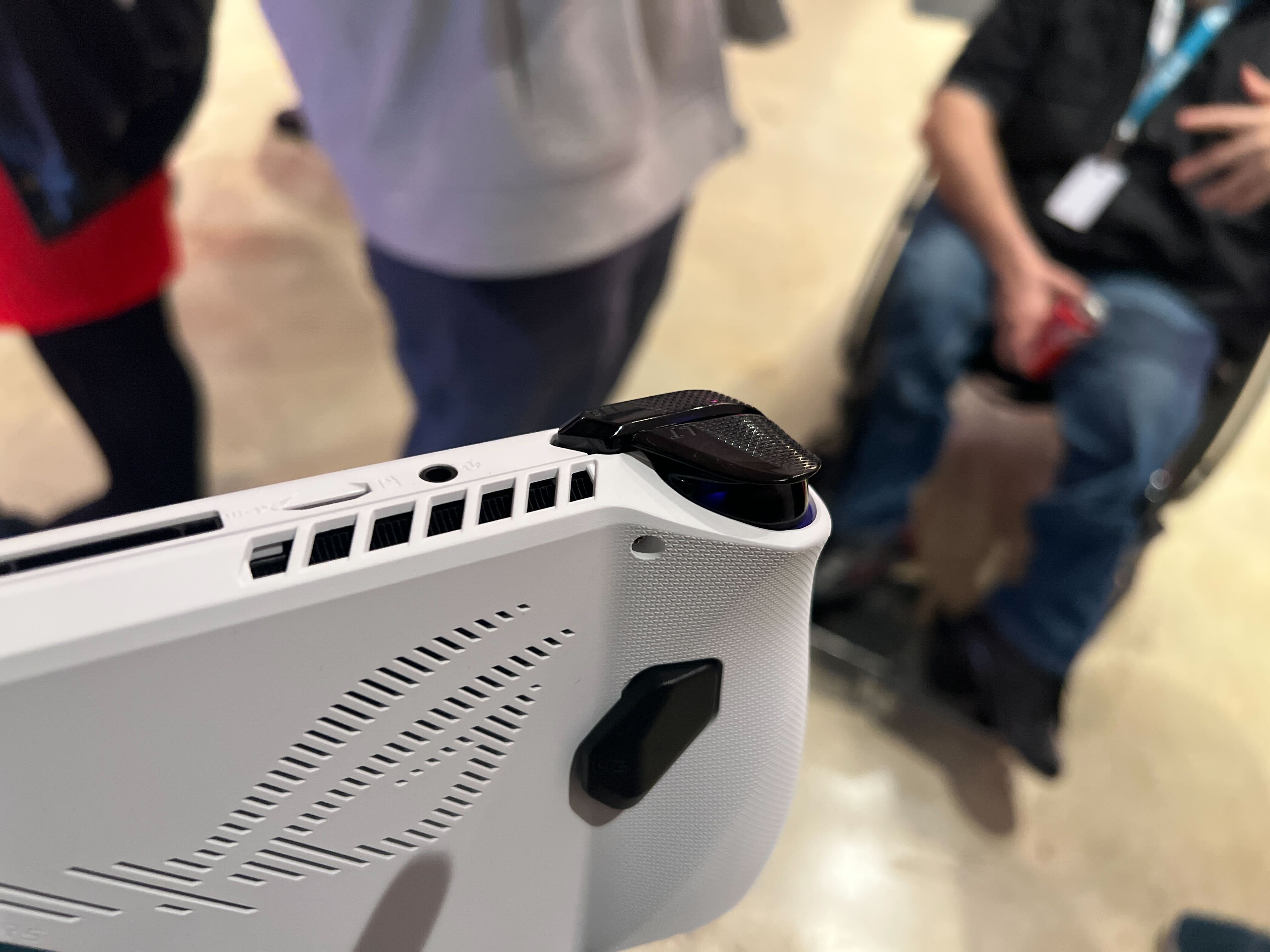
The good...
There are plenty of good things to say about the Asus ROG Ally even this early in the game. For one, the design is an excellent blend of looks and practicality. The white color immediately stands out, moving away from the gamer aesthetic in general and specifically away from the all-black of the Steam Deck. Then there’s the honeycomb design that makes the handheld pop, as well as the RGB lighting on both analog sticks. But the white color and holes in the chassis keep the system cool and sweat-free against your hands, handy for long gaming sessions. The RGB responses to various in-game commands, which adds a level of interactivity,
The entire system is also super lightweight, thanks to a combination of the holes in the chassis as well as the thin components that make up the insides. This works especially well for long sessions, including for holding certain positions that would most likely not cause fatigue an hour later. It has a familiar button layout, with the analog sticks and six trigger buttons particularly comfortable and easy to use.
What’s even more impressive is what’s under the hood; the CPU and GPU. The former is a Zen 4-powered AMD Ryzen Z1 chip while the latter is the XG mobile. Both work incredibly hard to deliver an incredible experience: a mix of smooth framerate, beautiful high-resolution graphics, ray tracing, and DirectX 11 and 12 support. I’m still floored by what Asus was able to accomplish with this portable and am truly excited to see how much further this tech can be pushed in the near future.
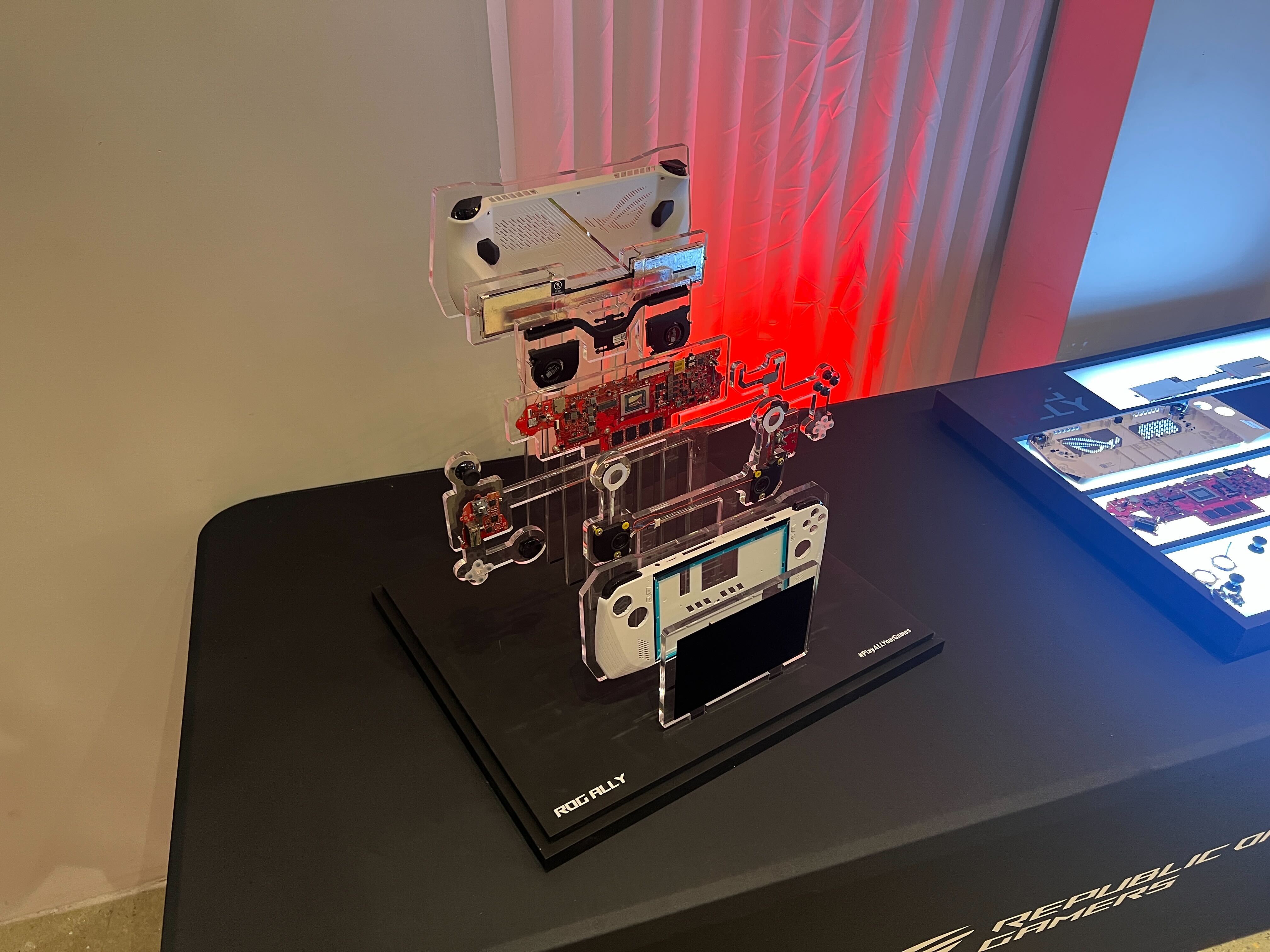
The bad...
While testing out the Asus ROG Ally, I and other colleagues did notice a significant issue. Though the system in general remained pretty cool, there was a lot of heat being generated through the top vents. Normally this could be something ignored due to the components’ power after a lengthy gaming session. But the overheating would occur merely several minutes after running the machine.
It’s most likely a byproduct of having such powerful specs in such a thin and light handheld. Or it could be that, unlike the Steam Deck, the ROG Ally’s vent is too close to areas that your hands will need to reach across for various buttons. A BIOS update could help mitigate this problem if Asus chooses to release one after launch. But overheating in general, especially when it’s severe enough, can cause absolute mayhem on components and shorten their lifespan. Hopefully, we’ll see a fix for it either by launch, or soon after.
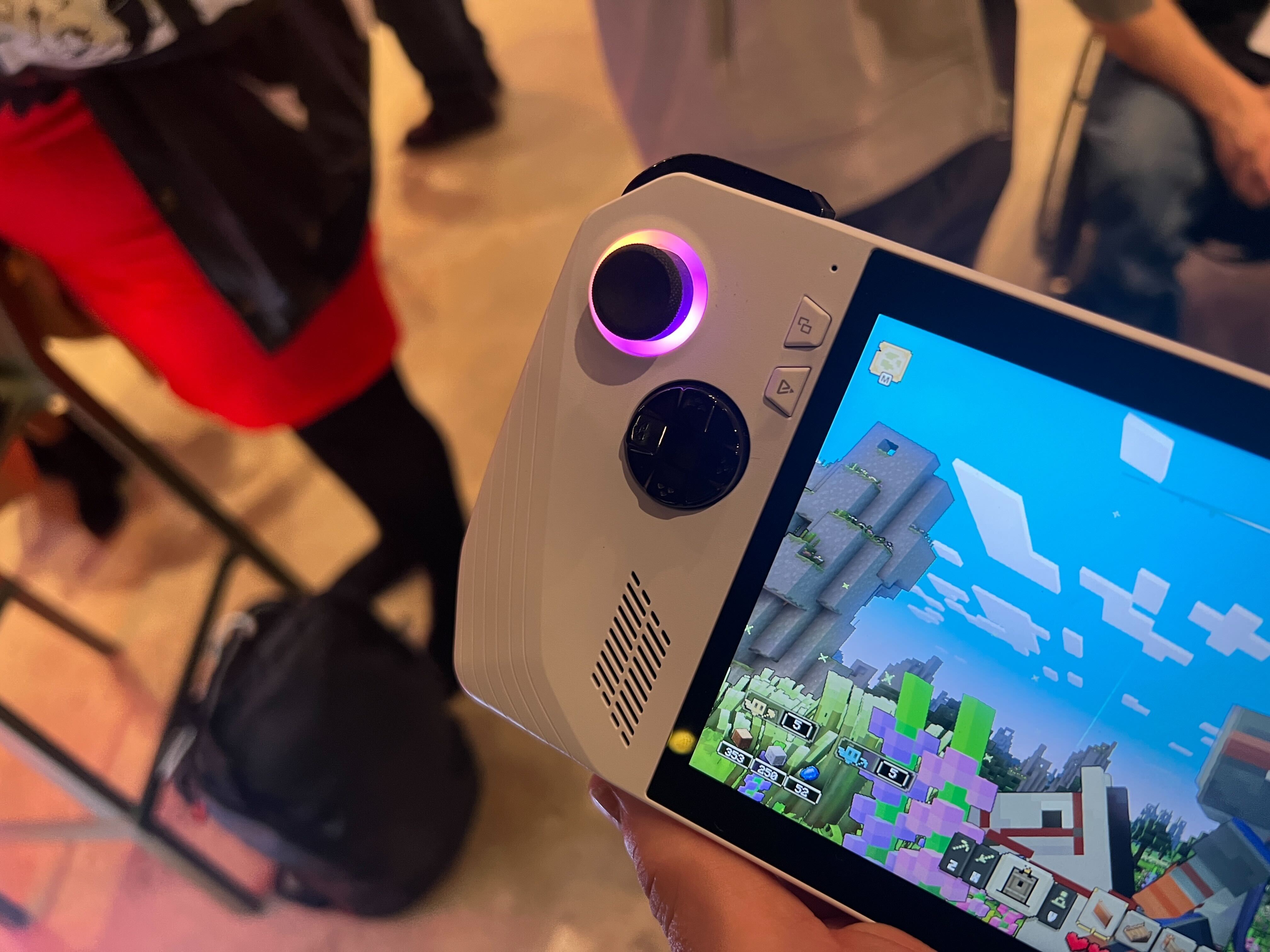
...And the ugly
The elephant in the room is something that Asus has been actively avoiding revealing until the ROG Ally’s May launch, which is the availability and especially the pricing. We can assume the launch will most likely be a global one, or at least one for the US and UK as those are the two regions with press events. A global launch would be a strong statement of intent against the Steam Deck, which had to slowly roll out units across the globe months after the initial release.
But while launch regions can be worked out, the pricing is something that could absolutely make or break the ROG Ally. The Steam Deck had three models at different prices: a $399 version, a $529 model, and a $649 model. We’ve received confirmation from Asus that there will be two models, so it’s safe to assume that there won’t be a cheaper version considering the specs that went into it. But if this handheld hopes to compete with the Steam Deck, it needs to have a competitive price.
And the statement that the ROG Ally will be under $1,000 is worrying. Gamers have proven in the past that no matter how powerful a system is, if the price is too much it will have a very limited audience willing or able to pay. And considering the cost of living crisis we’re currently in, one that’s already negatively affected PC and laptop sales, it’s safe to say that Asus’ pretty gaming toy will suffer if it costs too much.
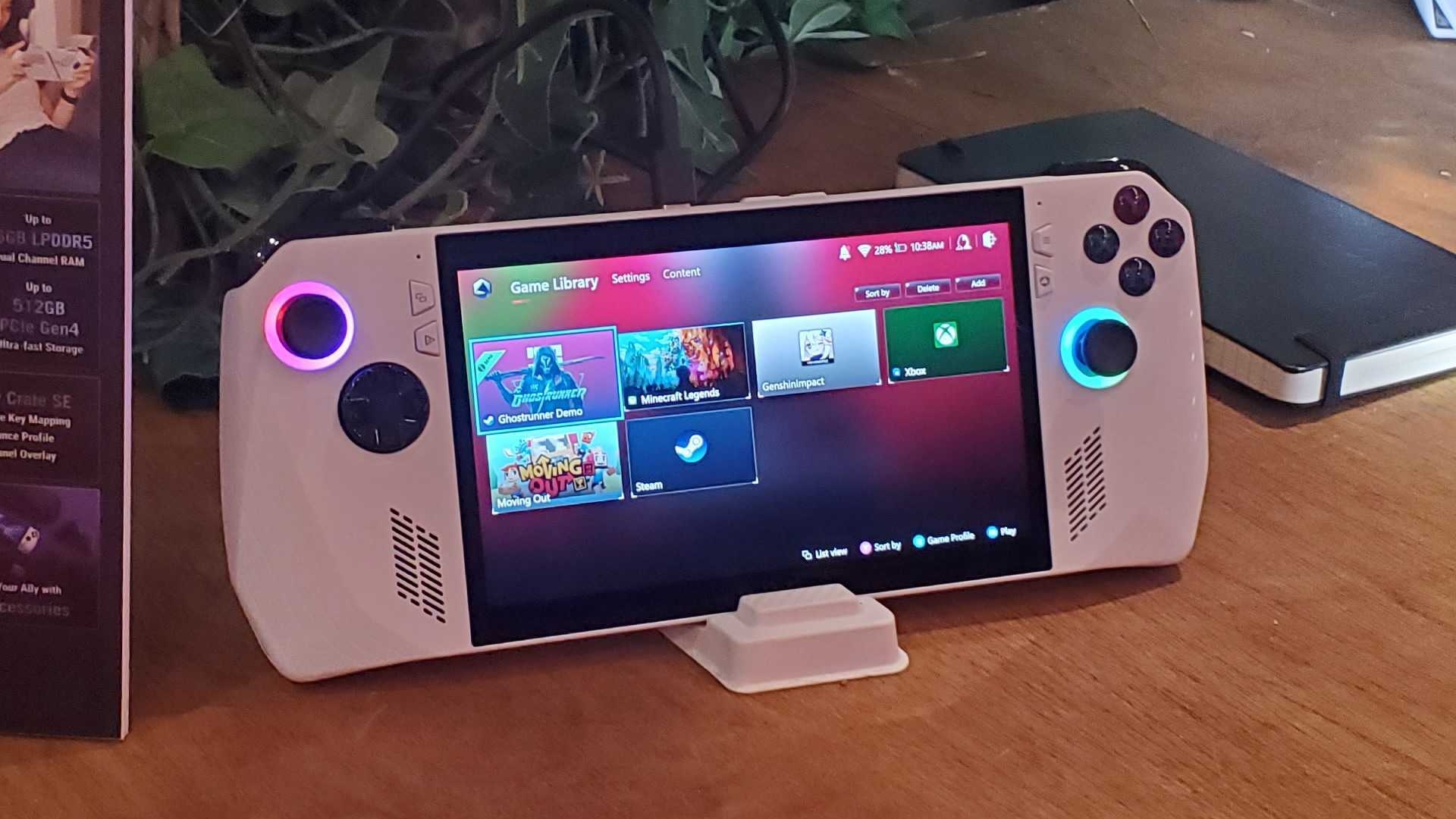
Final thoughts
From what I’ve seen and played with during the recent media preview event, the Asus ROG Ally is an extremely impressive piece of technology. Not only does it have an excellent design, but the tailor-made components truly maximize its performance potential right out of the gate. It’s a well-crafted handheld that shows how much time, effort, and budget Asus poured into it, instead of it being some throwaway Steam Deck competitor.
But for all its positives, it has two major negatives that could impact sales momentum or even destroy its launch. If Asus has all the right answers then I will wholly admit to overreacting.
But, as of right now, there’s just too much information being held back until launch day, and we’re less than a month away from that date. Asus, please don’t mess this up. The Asus ROG Ally and everyone who worked hard on it for over five years deserve better.







